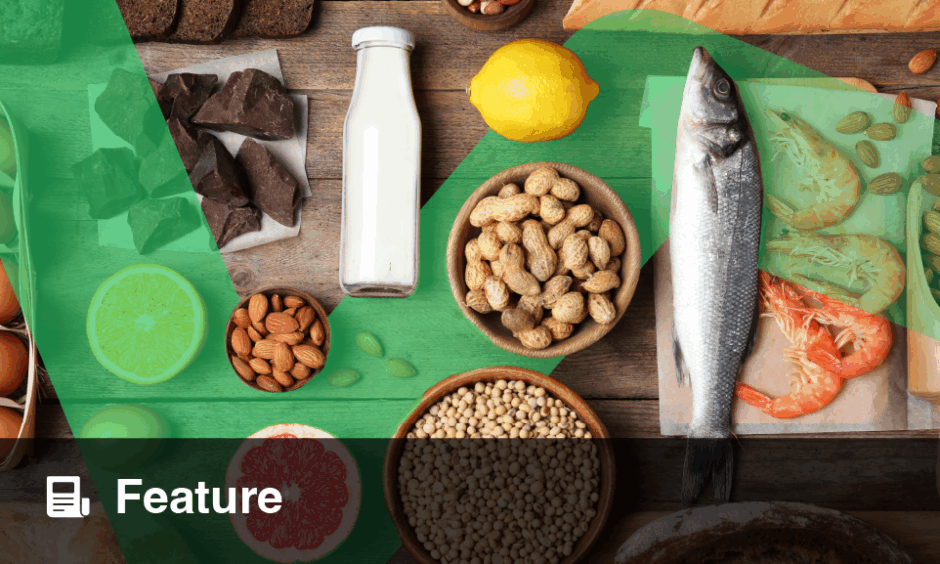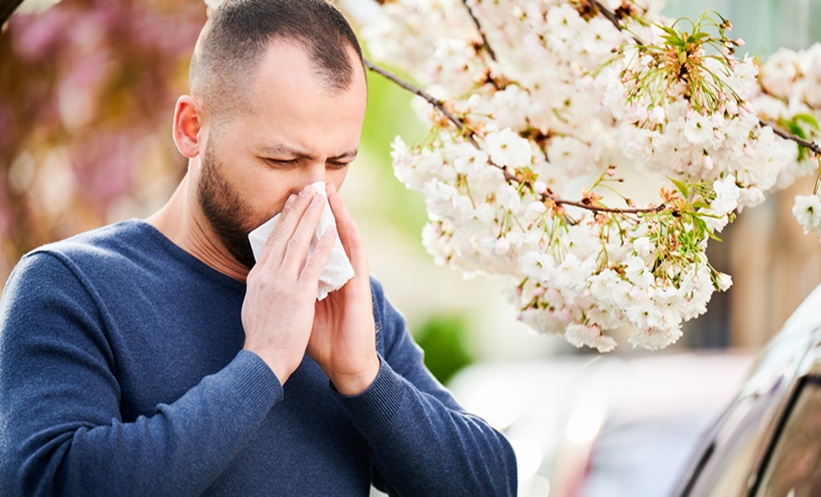MAST CELL INTERACTIONS WITH NERVOUS SYSTEM
Degranulation of activated mast cells affects many conditions and can modulate physiological and pathological responses. Mast cells are mostly located around blood vessels and sensory nerves.1 They derive from myeloid lineage and reside in connective tissues.2 Mast cells are granulocytes that have heterogenous phenotypes, and were originally named by Paul Ehrlich in 1879.3
The main role of mast cells as a part of the innate immune system lies within innate and adaptive immune responses, participating in the immune mechanisms, and protecting against viral and bacterial threats.1 Many conditions ranging from urticaria to anaphylaxis, as well as autoimmune conditions, have mast cells in the pathophysiology.3
Mast cells recognise injured tissues with the help of receptors in association with the epithelium and activate initial inflammatory responses.4 They play a role in tissue repair and angiogenesis, and are mainly responsible for antiparasitic immune responses through the mechanisms of vasodilation and activation of nervous system.5 These responses are influenced by cytokines, as well as other humoral factors within the body.3
In the barrier tissues mast cells release pro- and anti-inflammatory mediators that can either be preformed and kept in granules, or produced.6 Mast cells can be activated via FcϵRI receptors bound to specific IgE molecules or with the help of toll-like receptors, IgG receptors, and receptors to components of complement.7
A range of medicators can stimulate sensory nerve receptors, including protease-activated receptor-2, histamine 1–4-receptors, IL-31 receptors, and high-affinity nerve growth factor receptors.8
In an allergic reaction, the allergen crosslinks two neighbouring IgE molecules (specific to that particular protein) bound to receptors on the surfaces of basophils and mast cells, leading to release of medicators.9
Mast cells may be activated by allergens/auto-allergens or IgG antibodies against IgE or its receptor. Activation by the autoimmune mechanism can happen through binding IgG anti-IgE with the α subunit of adjacent IgE receptors on mast cells.10
Complement activation by immune complexes can result in release of complement 3a, complement 4a, and complement 5a anaphylatoxins that can cause histamine release via an IgE independent mechanism.11 It was shown that degranulation of mast cells via anaphylatoxins is restricted to certain subpopulations of mast cells because mucosal mast cells do not express anaphylatoxin receptors.12
Reciprocal interactions between sensory nerves and mast cells happen via vasoactive intestinal peptides and neuropeptides (substance P), leading to stimulation and degranulation of mast cells potentiation of pruritus and inflammatory response.13 In chronic skin conditions that include allergic contact dermatitis, atopic dermatitis, and psoriasis, as well as urticaria and angioedema, intense itch occurs as a result of links between mast cells and sensory nerves in the state of neurogenic inflammation in the skin. Pruritus can be exacerbated by endogenous and exogenous co-factors.14
ROLE OF CO-FACTORS FOR BASOPHILS AND MAST CELLS
Physical factors known as co-factors include exercise exceeding the standard daily routine, alcohol, non-steroidal anti-inflammatory medication, and heat or change in temperature, as well as other factors that can range from increased stress levels, changes in hormonal levels (menstruation), or consequences of an infection. Genetic background may contribute in creating clinically relevant predisposition to particular conditions.15
The presence of co-factors may explain why some patient can tolerate an allergen in some circumstances but in others the same patients develop a severe anaphylactic reaction. Co-factors can influence basophils and mast cells, leading to mediator release.16
In the presence of certain co-factors less quantity of allergen might be required to cause clinical symptoms.17
According to literature co-factors may have contributed to up to 30% of episodes of anaphylaxis in adults. Epidemiological studies demonstrated that 39% of severe reactions were triggered by co-factors and the most frequent were due to exercise, alcohol, non-steroidal anti-inflammatory drugs, and infections.18 Exercise can influence adenosine and eicosanoid metabolism, and increase plasma osmolarity associated with redistribution of blood flow.19
It should be especially recommended to avoid the combined intake of identified food allergens and non-steroidal anti-inflammatory drugs, because they action through inhibition of cyclooxygenase and production of prostaglandin E2, and can exacerbate allergy symptoms.20
Mast cells and basophils can be activated by alcohol as a co-factor as it relaxes tight junctions in gut epithelium, leading to an increase in intestinal protein absorption, and especially for small proteins, an alcohol-dependent increase in the intestinal absorption. In approximately 10% of patients alcohol consumption is linked with an increase in food allergy manifestations.21
Pseudoallergens can also influence mast cells. These include preservatives and colourings used in a range of foods, alongside dysbiosis in the gastrointestinal tract, deficiency of vitamin D, and changes in iron status profile.22
Knowledge about co-factors is important in prevention during allergen-specific immunotherapy. The role of infections as co-factors must be assessed during treatment. Immunotherapy can be paused and the allergen dose can be reduced to avoid co-factor effect in case of an infection.15
Proton pump inhibitors and Type 2 antihistamines, due to the mechanism of their action, can reduce the concentration of gastric acid in the stomach, which can be important for patients with oral allergy syndrome to acid-sensitive allergens, making them at risk of developing a systemic reaction following high allergen intake while taking the above medications.23
CO-FACTORS INDUCED GLUTEN ALLERGY
A separate condition is wheat-dependent, exercise-induced, IgE-mediated anaphylaxis, related to consumption of wheat products and engaging in physical activity. In a sensitised individual the symptoms can vary and range from mild pruritus, urticaria, and angioedema to a full-blown anaphylaxis. They only occur when several conditions are met and will only arise within 2 hours of consumption of gluten (omega 5-giladin)-containing food and exposure to a co-factor or combination of co-factors.24,25
The common symptoms of mast cell activation include pruritus, hypotension, loss of consciousness following or during exercise, urticaria, angioedema, flushing, and respiratory and gastrointestinal symptoms. They can be exacerbated by a recent or chronic infection.26-30
Co-factors, including exercise and alcohol, might lower the threshold for IgE-mediated mast cell degranulation, increase allergen permeability in the gastrointestinal tract and osmolality, and redistribute blood flow.27,31,32
There is a hypothesis that sensitisation to gluten occurs through the damage of intact skin in the form of gluten-containing protein fragments in cosmetic products. Among wheat proteins, omega 5-gliadin and high-molecular-weight glutenin subunits were shown to be the major allergens.28,33-36
Better understanding of the underlying processes leading to co-factor induced histamine release will allow us to develop avoidance strategies and new treatments, and give better advice to our patients.







